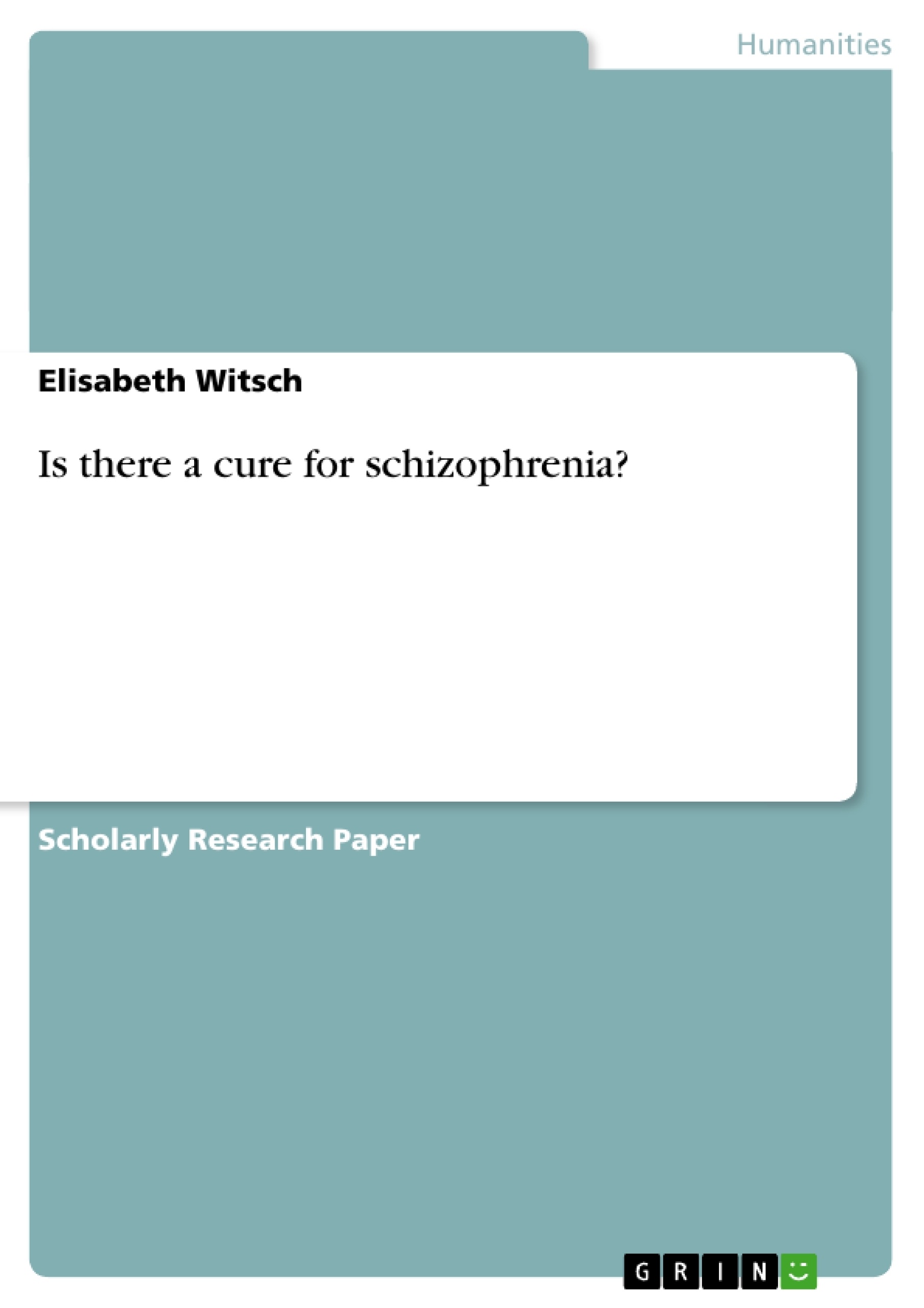About 1 % of the world population suffers from schizophrenia. Many treatment-forms have been applied on this mental illness; drug-treatment with atypical antipsychotics being one of them. This article addresses the question if atypical antipsychotics are an effective treatment for schizophrenia. Since they take away most symptoms of schizophrenia without causing serious side-effects, they seem to be a superior treatment compared to the formerly used neuroleptics.
Inhaltsverzeichnis (Table of Contents)
- INTRODUCTION
- SCHIZOPHRENIA
- Definition & symptoms
- TREATMENT WITH NEUROLEPTICS
- Mechanism of action
- Side-effects / Limitations
- TREATMENT WITH ATYPICAL ANTIPSYCHOTICS
- Mechanism of action & comparison to neuroleptics
Zielsetzung und Themenschwerpunkte (Objectives and Key Themes)
This article explores the effectiveness of atypical antipsychotics in treating schizophrenia. The authors aim to answer the question of whether these medications offer a superior treatment option compared to traditional neuroleptics. This investigation analyzes the mechanisms of action, side effects, and patient outcomes associated with both types of medications, ultimately aiming to evaluate their overall impact on the quality of life for individuals with schizophrenia.
- The effectiveness of atypical antipsychotics in treating schizophrenia.
- Comparison of atypical antipsychotics to traditional neuroleptics.
- Mechanisms of action and side effects of both types of medication.
- Impact of medication on patient quality of life.
- Dopamine hypothesis and its role in understanding schizophrenia.
Zusammenfassung der Kapitel (Chapter Summaries)
- INTRODUCTION: The article introduces the topic of schizophrenia, emphasizing its significant impact on individuals and society. It highlights the importance of effective treatment and the need for further research into the effectiveness of atypical antipsychotics.
- SCHIZOPHRENIA: This section defines schizophrenia and its symptoms, categorizing them into positive and negative symptoms. The authors also introduce the dopamine hypothesis, a theory explaining the potential neurological basis of schizophrenia.
- TREATMENT WITH NEUROLEPTICS: The chapter discusses the historical use of neuroleptics, or classical antipsychotics, in treating schizophrenia. It describes their mechanism of action, primarily targeting dopamine receptors, and outlines their effectiveness in addressing positive symptoms. The authors also detail the limitations of neuroleptics, including their potential side effects and lack of efficacy in treating negative symptoms.
- TREATMENT WITH ATYPICAL ANTIPSYCHOTICS: This chapter delves into the development and mechanisms of action of atypical antipsychotics. It highlights their superior ability to manage both positive and negative symptoms while minimizing side effects. The authors compare the effectiveness of atypical antipsychotics to traditional neuroleptics, emphasizing the potential benefits of the newer treatment approach.
Schlüsselwörter (Keywords)
This article focuses on schizophrenia, atypical antipsychotics, neuroleptics, dopamine hypothesis, positive and negative symptoms, side effects, patient compliance, and quality of life. The investigation analyzes the effectiveness of atypical antipsychotics in treating schizophrenia, comparing their mechanisms of action and impact on patients to traditional neuroleptics. The study aims to contribute to a better understanding of the role of dopamine in schizophrenia and the potential benefits of using atypical antipsychotics in managing this complex mental illness.
- Quote paper
- Elisabeth Witsch (Author), 2004, Is there a cure for schizophrenia?, Munich, GRIN Verlag, https://www.grin.com/document/27931



